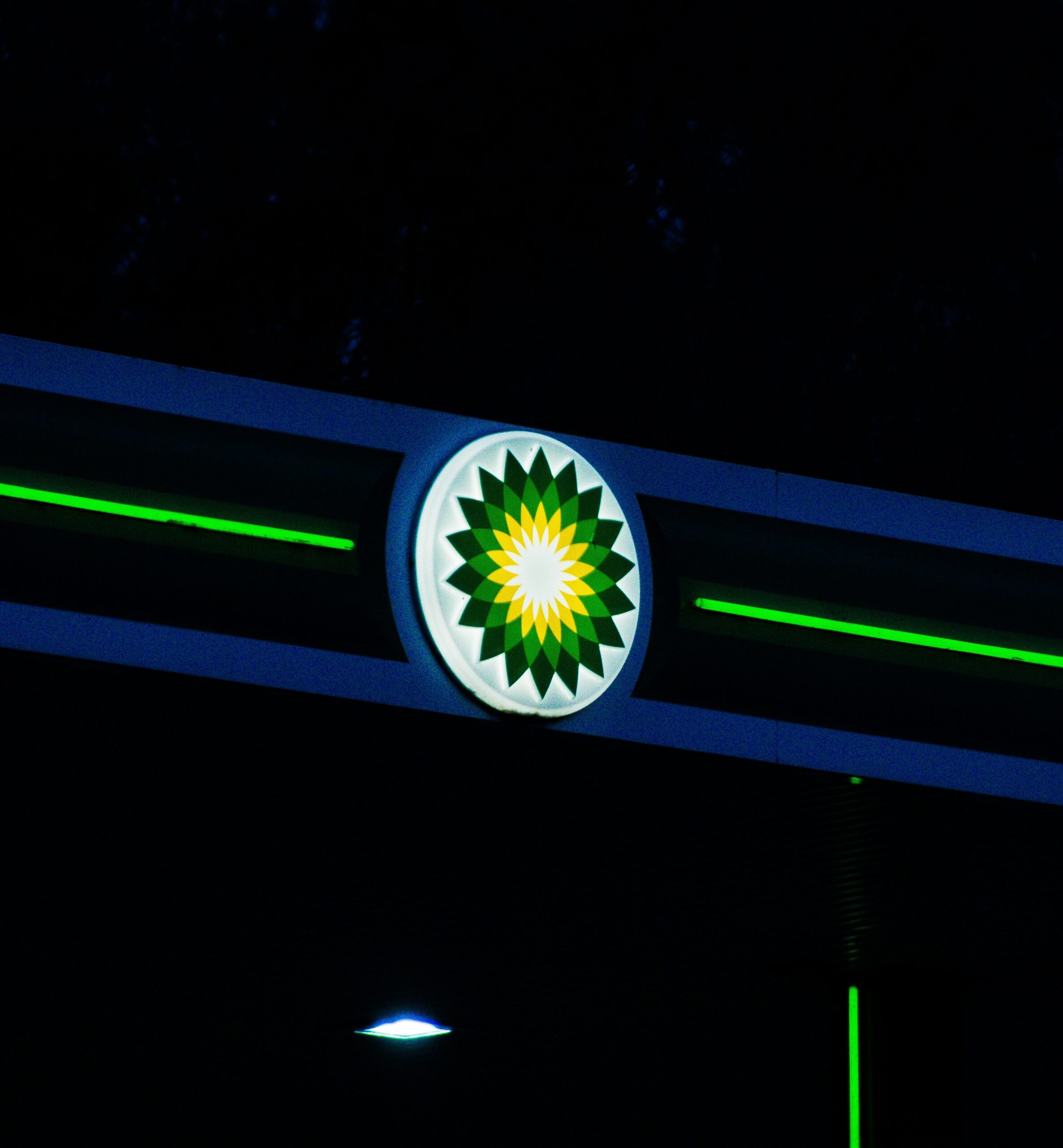BP Logo: Meaning, History, Design Influences, and Evolution

Contents
The BP logo is undoubtedly one of the most recognizable and iconic logos in the world. Known for its vibrant green and yellow color scheme, the logo has evolved over the years, adapting to changing trends and design influences. In this article, we will delve into the meaning behind the BP logo, explore its fascinating history, analyze the design influences that have shaped its visual identity, and discuss its evolution into a modern symbol of progress and sustainability.
Understanding the BP Logo
Before we dive into the rich history of the BP logo, let’s take a moment to understand its symbolism. The logo is composed of a green and yellow sunflower, with the initials “BP” displayed prominently at its center. At first glance, the logo seems simple and straightforward. However, upon closer inspection, the logo reveals a deeper meaning and significance.

When exploring the symbolism behind the BP logo, it becomes evident that every element was carefully chosen to convey a specific message. The sunflower, with its vibrant yellow petals and prominent central disc, has always been associated with energy, vitality, and growth. This symbolism perfectly reflects BP’s core values and objectives as a global energy company. The company aims to provide clean, reliable, and sustainable energy solutions to meet the growing demands of the world.
Furthermore, the green color used in the logo goes beyond aesthetics; it signifies BP’s unwavering commitment to environmental sustainability. It symbolizes their continuous efforts to reduce carbon emissions, invest in renewable energy sources, and promote eco-friendly practices. Through their logo, BP aims to not only represent their brand but also to communicate a sense of trust, responsibility, and forward-thinking to their stakeholders.
The Symbolism Behind the BP Logo
The sunflower, with its vibrant yellow petals and prominent central disc, has always been associated with energy, vitality, and growth. This symbolism perfectly reflects BP’s core values and objectives as a global energy company. The company aims to provide clean, reliable, and sustainable energy solutions to meet the growing demands of the world.
The green color used in the logo signifies BP’s commitment to environmental sustainability. It symbolizes their efforts to reduce carbon emissions and develop renewable energy sources. Through their logo, BP aims to foster a sense of trust, responsibility, and forward-thinking among their stakeholders.
The Color Palette of the BP Logo
The choice of colors in the BP logo is not accidental. The vibrant green shade represents nature, growth, and sustainability. It creates a sense of harmony and balance when combined with the warm and energetic yellow color of the sunflower petals. This color combination is visually appealing and creates a lasting impression on viewers.
Moreover, the yellow color in the logo symbolizes optimism, innovation, and positivity. It reflects BP’s vision for a brighter and more sustainable future, where energy solutions are not only efficient but also environmentally friendly. The harmonious blend of green and yellow in the logo conveys a message of balance, progress, and a shared responsibility towards a greener planet.

The History of the BP Logo
The BP logo has a fascinating history that spans several decades. It has undergone numerous redesigns and modifications over the years, reflecting shifting design trends and the company’s evolving global presence.
BP, originally known as the Anglo-Persian Oil Company, has a rich heritage dating back to the early 20th century. The company’s logo has always been a visual representation of its values and aspirations, mirroring the changes in the oil industry and society at large.
The Original BP Logo
The original BP logo, introduced in 1930, featured a shield-shaped emblem with the company’s name written across it. The shield was adorned with a green and gold color scheme, symbolizing BP’s commitment to technological innovation and progress in the oil industry.
Throughout the mid-20th century, as BP expanded its operations globally, the logo underwent subtle modifications to adapt to different cultural contexts and design sensibilities. These changes reflected BP’s growing influence and presence on the world stage.
Significant Changes Over the Years
In 2000, BP revealed a major redesign of its logo, replacing the shield emblem with the iconic sunflower symbol we know today. This change marked a paradigm shift in the company’s visual identity, moving away from the traditional and embracing a more modern and environmentally conscious approach.
Since the introduction of the sunflower logo, BP has continued to refine its branding strategy, aligning its visual identity with its sustainability goals and commitment to renewable energy. The logo’s vibrant color palette and dynamic design reflect BP’s forward-thinking approach to addressing the challenges of climate change and energy transition.
Design Influences on the BP Logo
Design trends and cultural influences have played a vital role in shaping the BP logo throughout its history. Let’s take a closer look at some of these influences and their impact on the logo’s overall design.
Cultural Influences on the Design
The BP logo’s visual elements have been influenced by various cultures around the world. The sunflower, as a symbol of energy and growth, resonates with people from different backgrounds and holds universal appeal. This cultural inclusivity is crucial for a multinational company like BP, as it helps bridge cultural gaps and foster a sense of unity among its diverse stakeholders.
Moreover, the color palette used in the BP logo also reflects cultural influences. The vibrant shades of green and yellow not only symbolize growth and energy but also evoke a sense of environmental consciousness and sustainability. This color choice aligns with the company’s commitment to renewable energy and eco-friendly practices, showcasing BP’s dedication to a greener future.
Industry Trends and Their Impact
As an energy company, BP must stay abreast of industry trends and innovations. The logo designs that have emerged throughout the company’s history reflect these trends, mirroring the changing perceptions of the oil and gas industry. From the traditional shield emblem to the modern sunflower symbol, the logo embodies BP’s ability to adapt and embrace new possibilities and responsibilities.
Furthermore, the typography used in the BP logo has also evolved in response to industry trends. The shift from bold, serif fonts to sleeker, more contemporary typefaces reflects the company’s forward-thinking approach and willingness to evolve with the times. This attention to typographic detail not only enhances the logo’s visual appeal but also communicates BP’s commitment to modernity and innovation in the energy sector.
The Evolution of the BP Logo
The BP logo has come a long way since its inception, transforming from a traditional emblem to a modern symbol of progress and sustainability. Let’s explore the key stages in its evolution.
The Transition from Traditional to Modern Design
With the introduction of the sunflower symbol in 2000, BP embarked on a new era of visually appealing and environmentally conscious design. The shift from the shield emblem to the sunflower represented a paradigm shift in the company’s approach and values. It signaled a desire to embrace a more sustainable future and position BP as a global leader in renewable and clean energy solutions.
The Future of the BP Logo Design
In today’s rapidly changing world, the BP logo will continue to evolve, reflecting the company’s commitment to innovation and sustainable practices. As technology advances and environmental concerns become even more prominent, we can expect further refinements and modifications to the logo, ensuring it remains a symbol of progress and a beacon of hope for a greener tomorrow.
In conclusion, the BP logo has a meaningful history, imbued with rich symbolism, design influences, and an inspiring evolution. As symbols often do, the logo represents more than just a company – it embodies principles and aspirations. It is a visual testament to BP’s commitment to sustainable energy and a reminder that progress is intertwined with responsibility.
Now that you’ve explored the significance and evolution of the BP logo, it’s clear that a well-designed logo is more than just an image; it’s a powerful storytelling tool that encapsulates a brand’s essence. Ready to craft your own symbol of progress and innovation? With Boon, you can harness the power of Artificial Intelligence to create a custom logo that resonates with your brand’s values and vision. Whether you’re in the energy sector or any other industry, Boon makes it easy to engage users, tell a compelling story, and strengthen your business presence. Let’s make a logo! and see how your brand can make a lasting impression in just five minutes.

Mia Vargas is our Senior SEO & Branding Specialist, a dynamic force in digital strategy with a keen eye for brand storytelling. With over a decade of experience in optimizing online visibility and shaping brand identities, Mia seamlessly combines her technical SEO expertise with her passion for creativity. She is skilled at crafting strategies that not only elevate search rankings but also resonate with target audiences, ensuring our clients build meaningful, lasting connections. Known for her innovative approach and trend-focused insights, Mia plays a crucial role in driving our team to stay ahead in a rapidly changing digital landscape, balancing analytics with artistic flair to deliver impactful results.
